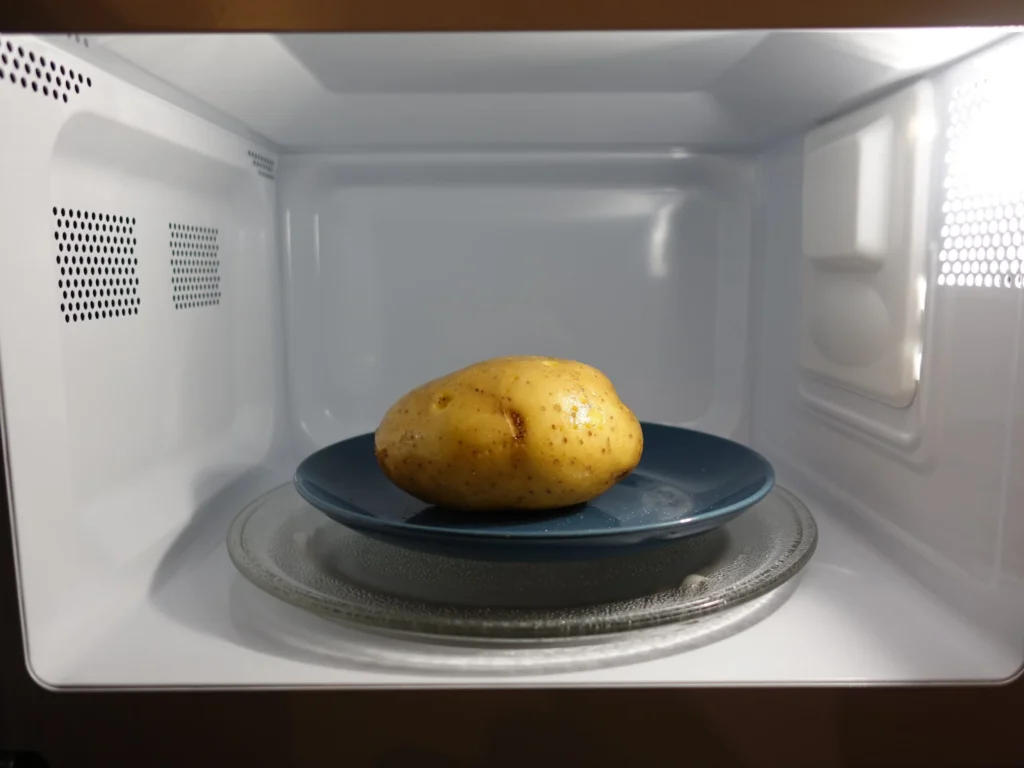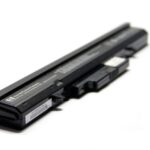Top 5 Things You Should Never Microwave

Microwaves have become an indispensable kitchen appliance, offering unparalleled convenience and speed in heating and cooking food, however, these are the Top 5 Things You Should Never Microwave: Aluminum foil, Metal utensils, Styrofoam containers, Eggs in their shells, Hot peppers, Grapes, and frozen pack meat.
Microwaves are a convenient kitchen appliance, but they’re not a one-size-fits-all solution. Delve into the world of microwave safety as we uncover the hidden dangers of nuking certain items. From common household staples to everyday essentials, you’ll learn why some items should never come into contact with those electromagnetic waves.
As you read through our comprehensive list, you’ll gain valuable insights into preserving the integrity of your food and your microwave. Say goodbye to ruined meals, potential health hazards, and costly appliance repairs.
Armed with this knowledge, you’ll be equipped to make informed decisions about what goes into your microwave and what stays out.
Revolutionize your microwave habits and safeguard your health and home. Stay tuned as we unveil the Top 5 Things You Should Never Microwave. Your kitchen—and your taste buds—will thank you.
Risks associated with microwaving certain items
However, amid the ease and efficiency, there lurk potential dangers when microwaving certain items. Not everything is meant for the microwave, and ignorance of these risks can lead to harmful consequences, from damaging the appliance to posing health hazards.
Understanding Microwaves
How microwaves work
Microwaves operate by emitting electromagnetic radiation that excites water molecules in food, causing them to vibrate and generate heat. This rapid heating process is what enables microwaves to cook or warm food quickly and efficiently.
Safety precautions when using microwaves
While microwaves are generally safe when used correctly, there are essential safety precautions to follow. This includes using microwave-safe containers, ensuring proper ventilation, and avoiding superheating liquids to prevent accidents and injuries.

Top 5 Things You Should Never Microwave
Aluminum foil
Dangers of sparking and fire
Aluminum foil reflects microwaves, leading to the risk of sparking and potential fires inside the appliance. The high heat generated by the arcing can damage the microwave and pose a fire hazard in the kitchen.
Alternatives for covering food in the microwave
Instead of aluminum foil, opt for microwave-safe lids or covers made of glass or ceramic. These alternatives allow steam to escape while preventing splattering and ensuring even heating of the food.
Metal utensils
Risk of arcing and damaging the microwave
Metal utensils, such as knives or forks, can cause arcing in the microwave, resulting in damage to the appliance and potential injury to the user. The metal reflects microwaves, leading to concentrated energy that can ignite nearby materials or cause electrical sparks.
Safe alternatives for reheating and cooking
Choose utensils made of microwave-safe materials, such as glass, ceramic, or certain types of plastic. These materials do not interfere with the microwave’s operation and are safe to use for reheating and cooking food.
Plastic containers not labeled microwave-safe
Potential release of harmful chemicals
Plastic containers that are not labeled as microwave-safe may release harmful chemicals when heated, posing health risks when ingested. These chemicals can leach into food, especially when exposed to high temperatures in the microwave.
Safer options for reheating and storing food
Opt for glass or ceramic containers for microwaving food, as they are inert and do not release harmful chemicals when heated. Alternatively, look for containers labeled as microwave-safe to ensure the safety of reheated meals.
Styrofoam containers
Risk of melting and releasing toxins
Styrofoam containers can melt when exposed to high temperatures in the microwave, releasing toxic chemicals into food. These chemicals, such as styrene, can leach into food and pose health risks when ingested.
Environmentally friendly alternatives for microwave use
Choose eco-friendly alternatives to Styrofoam, such as glass or silicone containers, which are safe for microwaving and can be reused multiple times. These alternatives are not only safer for your health but also better for the environment.
Eggs in their shells
Risk of explosion due to steam buildup
Microwaving eggs in their shells can lead to steam buildup inside, causing them to explode and potentially causing burns or injury to the user. The rapid expansion of steam can shatter the shell, sending hot egg contents flying.
Safe methods for cooking eggs in the microwave
Instead of microwaving eggs in their shells, opt for alternative cooking methods such as boiling or poaching. If you prefer microwaving, crack the eggs into a microwave-safe dish and cover them to prevent splattering while allowing steam to escape.
Other Items to Avoid Microwaving
Grapes
Potential for plasma generation and sparking
Grapes have a unique shape and composition that can create a plasma effect when microwaved, leading to sparking and potential damage to the appliance. The high water content and specific geometry of grapes make them susceptible to this phenomenon.
Safer ways to enjoy grapes as a snack
Enjoy grapes fresh or chilled for a refreshing and healthy snack without the need for microwaving. Alternatively, use them in salads, smoothies, or desserts for added flavor and nutrition without the risk of sparking in the microwave.
Hot peppers
Release of capsaicin fumes causing irritation
Microwaving hot peppers can release capsaicin fumes into the air, irritating to the eyes, nose, and throat. These volatile compounds can linger in the kitchen and affect sensitive individuals, leading to discomfort or respiratory issues.
Precautions for handling and cooking spicy foods
When cooking with hot peppers, ensure proper ventilation in the kitchen to disperse any fumes released during microwaving. Additionally, wear gloves when handling spicy peppers to prevent skin irritation and avoid touching your face or eyes.
Bread
Risk of drying out and becoming tough
Microwaving bread can cause it to dry out and become tough or rubbery, especially if heated for too long or at high temperatures.
The microwave’s rapid heating process can evaporate moisture from the bread, leaving it stale and unappetizing.
Tips for properly reheating bread without a microwave
Instead of microwaving, use alternative methods to reheat bread, such as toasting or oven baking. These methods help retain the bread’s moisture and texture, ensuring it stays soft and flavorful when served.
Frozen meat in its packaging
Uneven cooking and potential for plastic melting
Microwaving frozen meat in its packaging can result in uneven cooking and potential contamination from melted plastic.
The microwave’s uneven heating process may leave some parts of the meat undercooked while overheating the packaging, leading to plastic leaching into the food.
Best practices for defrosting meat safely
Thaw frozen meat safely by transferring it to a microwave-safe dish and using the microwave’s defrost setting or by allowing it to thaw in the refrigerator overnight.
Avoid microwaving meat in its original packaging to prevent plastic contamination and ensure even thawing.
Use microwave-safe cookware
Importance of using containers labeled as microwave-safe
When using the microwave, always choose containers that are labeled as microwave-safe to ensure they can withstand the heat without releasing harmful chemicals or melting.
Microwave-safe materials include glass, ceramic, and certain types of plastic that are specifically designed for microwave use.
Materials to look for when purchasing microwave-safe cookware
When purchasing cookware for use in the microwave, look for materials such as borosilicate glass, ceramic stoneware, or microwave-safe plastics labeled with the microwave-safe symbol.
These materials are designed to withstand the heat of the microwave without warping, melting, or leaching harmful chemicals into food.
Avoid superheating liquids
Risks of liquids exploding when overheated
Superheating can occur when liquids are heated in the microwave for too long, causing them to reach temperatures above their boiling point without boiling.
This can result in rapid boiling and explosive splattering when the liquid is disturbed, leading to burns or scalding injuries.
Techniques for preventing superheating in the microwave
To prevent superheating, use a microwave-safe container with a clean, smooth surface and avoid overheating liquids for prolonged periods. Additionally, place a non-metallic object such as a wooden spoon or microwave-safe stirring rod in the liquid to provide nucleation sites and promote even boiling.
Allow for ventilation
Importance of venting steam when cooking or reheating food
When cooking or reheating food in the microwave, it’s essential to allow steam to escape to prevent pressure buildup and ensure even heating.
Cover food loosely with a microwave-safe lid or vented microwave cover to allow steam to escape while preventing splattering.
Tips for covering food to prevent splattering while allowing for ventilation
When covering food in the microwave, use a microwave-safe lid or cover with vents to allow steam to escape while preventing splattering.
Alternatively, cover food loosely with a microwave-safe paper towel or microwave-safe plastic wrap, leaving a small opening to vent steam.
Regular maintenance and cleaning
Importance of keeping the microwave clean and free of debris
Regular maintenance and cleaning are essential for keeping the microwave in optimal working condition and preventing odors, stains, and bacteria buildup.
A clean microwave not only ensures safe and hygienic food preparation but also prolongs the lifespan of the appliance.
Tips for safely cleaning the microwave to prevent odors and bacteria buildup
To clean the microwave, remove any food debris or spills promptly and wipe down the interior with a mild detergent solution or microwave-safe cleaning spray.
Pay special attention to areas prone to splatters, such as the walls, ceiling, and turntable, and clean them thoroughly to prevent odors and bacteria buildup.
Conclusion
In conclusion, while microwaves offer unparalleled convenience in the kitchen, certain items should never be microwaved due to safety risks and potential hazards.
From aluminum foil and metal utensils to plastic containers and Styrofoam, it’s essential to be mindful of what you microwave to avoid accidents, damage to the appliance, and potential health risks.
By following safety precautions, using microwave-safe cookware, and avoiding superheating liquids, you can ensure safe and efficient microwave use while enjoying the convenience of quick and easy meal preparation.
Remember to allow for ventilation, maintain and clean the microwave regularly, and be mindful of what you microwave to minimize risks and maximize safety in the kitchen.









